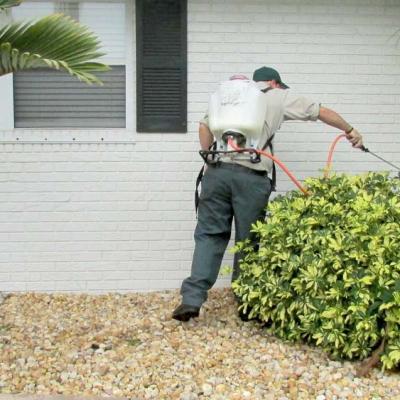By Niki N. Kefala
Agriculturist
niki.kefala@greenfox.gr
The pruning of citrus trees, such as orange, mandarin, lemon, citron, kumquat, bergamot, and bitter orange trees, occurs mainly in the spring, after the frosts and up until June.
Among these ‘sour’ trees, the lemon tree, sourest of them all, is the protagonist! The general rules for fruit trees apply, meaning pruning at specific periods, in order for them to branch out correctly as they grow, reduce the possibility of branches breaking due to excessive fruitage, increase crown aeration and allow light to penetrate. Furthermore, pruning improves the fruits’ quality standards, which, in the case of the lemon tree, translates to big juicy lemons!
Note that it is important to prune the trees at the right moment, so as not to risk losing part of the year’s yield.
The aforementioned right moment comes about after the harvesting of the lemons, at the end of winter, leaving the tree enough time to recover prior to the next season. We are talking about the time period between February and April, however due to contamination risks by Deuterphoma tracheiphila, a fungal plant pathogen that is active during these months, pruning can be done later, at the end of spring, once the tree has blossomed.
Speaking of Deuterphoma tracheiphila and the high risk of contamination the harmful fungus represents, it is worth pointing out the importance of, on one hand, the disinfection procedure for the pruning tools, and the healing of the wounds thanks to fungicides containing copper on the other.
We prune the lemon tree to achieve increased production, more and bigger fruits, as well as less diseases.
The limbs and branches of citrus trees are strong and less likely to break under the weight of a larger crop. Therefore, pruning doesn’t necessarily aim at resolving that particular problem, which is more serious in other fruiting trees.
Citrus trees can bear fruits all over the tree’s crown, including shaded areas. Hence, pruning which is geared towards interior light availability is not of primary importance.
In young trees, voracious shoots should be removed and any weak limbs pruned out. Adult trees should also have sprouts pruned out, as well as any dead wood, usually ensuring satisfactory light penetration. That said, lemon trees must be pruned more strictly when the tree grows vigorously and has many branches weighing it down, simultaneously creating the right ‘closed’ environment for the occurrence of diseases.
When pruning lemon trees, be sure to use very sharp shears or saws, because the wood is very strong. It also recommended to wear gloves to protect you from thorns. While the wood of citrus trees is very compact and strong, the bark is thin and easy to detach. Therefore, your blade should always face the tree to reduce the chances of it slipping towards you. Do not cut back branches too close to the trunk or their own base, or else you risk removing parts that are necessary for the wood to naturally heal the wound. If you do remove that part, the wood will stay exposed and a hollow stump will form over time.
Never cut back more than 1/3 of the tree on any given season. Begin pruning the lemon trees during their 1st or 2nd year to shape them according to your preferences. The tree shall be 2.5 to 3 meters high, for it to be easier to harvest and to take care of. Don’t rush the process because you risk cutting healthy branches that you need! Be diligent and observant enough to locate the parts that require pruning. People with experience in these matters have the capacity to identify voracious shoots, broken branches, infected/dead ones and remove them. But, you won’t learn unless you try it for yourself, so give it a go and learn from your mistakes.
To recapitulate, you should cut back voracious shoots and dried or infected branches, prune branches above the height you’ve decided on for your tree, keep the lemon tree’s shape by cutting any twigs that have grown beyond the desired frame, and, once you’re done, cover the wounds with a copper fungicide and remember to always disinfect the used tools.
All other fruiting citrus trees in gardens and estates, as well as ornamental trees planted in larges pots on someone’s balcony, are pruned in a similar fashion, maybe with a little less stringent requirements.
In case of a troublemaking frost – which is always possible – affected citrus trees mustn’t be pruned immediately, but later on, towards summertime. The cutting and general pruning depends on the extent of the damage. If frost damage is limited, then one should remove any dead wood, also cutting part of the fresh branch, 5-10 centimeters to be exact. If the disaster is extensive, the trunk should be cut 40 centimeters above the vaccination point, for the tree to reacquire new and dense vegetation. If the tree is cut below the vaccination point, you will end up with beautiful bitter oranges, which are perfect if you’re looking to make spoon sweets (fruit preserves)… Therefore, if in doubt, make sure to ask an expert!
Keep in mind however, that all trees are not endangered in the same way. The citron and lemon tree are the most sensitive, orange trees do include varieties that are strongly resistant to low temperatures, as do mandarin trees, the beloved clementine being the least resilient type.
Did you know that orange trees were among the favorite trees of Louis XIV of France? In the Versailles palace they couldn’t survive the winter’s cold though, so they were planted in large plant pots, which were in turn placed in rooms with large windows, sort of like a greenhouse, from October until May, when they returned to the gardens. The Versailles gardens influenced landscape architecture all over Europe and orange groves became a staple in Renaissance gardens!
One more thing… Citruses were widely known in Arab countries and the Moors brought them along when they conquered Spain. From that era, the Mosque–Cathedral of Córdoba remains intact, featuring, in its courtyard, the ‘Court of Oranges’, which contains 100 orange trees planted in the shape of a square and using the Moors’ characteristic irrigation canal system, still prominent in many parts of Spain.
It is obvious that over the centuries no one could ever resist the intoxicating aroma of the flowers, the juice’s rich flavor or the fine essential oils of the citrus peel!
Go on then, cultivate the sour tree of your choice and let it offer you all of nature’s blessings!















